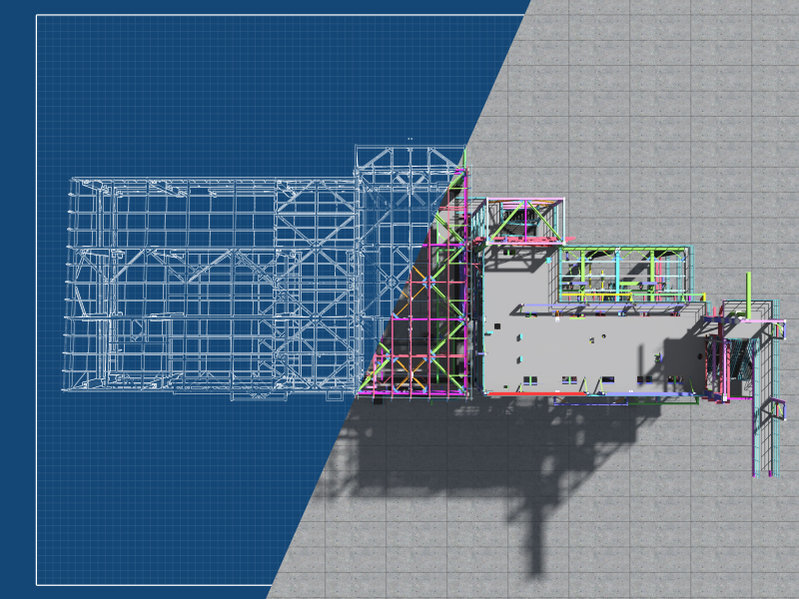Tim Dufault, FAIA – Concert CRO
In my post last week, I shared a personal reflection of how design and construction have evolved in my lifetime. A core premise of that history is for hundreds of years, design and construction interacted in a productive and successful manner. Yet, around the last quarter of the 20th century, a radical change occurred – the productive relationship turned adversarial. We can trace this to court rulings from the late 1960’s that held residential developers accountable for poor construction of track homes in California (Kriegler v. Eichler Homes, Inc. 1969). Since that time, the insurance industry, claims litigation, and contractual relationships all moved toward a separation of responsibilities (and liability) that revolve around two key ideas – “Design Intent” and “Means and Methods.”
The charge of the architecture/engineering disciplines is developing and documenting the design solution, describing, in general and specific terms, the “Design Intent” in drawings and other documentation that reflect the quality, character, and systems the building will embody. Contractors, subcontractors, and suppliers use those documents to create their own versions – their own interpretation – of the design intent based on their building experience, using components and practices they are familiar with, and adding their proprietary information including how and what methods they will use to install their work. The industry refers to this as “Means and Methods.” In an ideal system, there is a clear separation between the role of the architect (Design Intent) and the contractor (Means and Methods). However, both sides cross over this line all the time, especially when it comes to changes implemented during construction. When a claim arises, each side will assert that they were not responsible for the disputed work based on these well-defined silos.
Yet, this system is inefficient and wasteful. Owners spend billions of dollars every year paying for mistakes, changes, and lawsuits that arise from this siloed system. On average, anywhere from 3-5% of a typical construction projects cost is the result of misinterpretation, mistakes, and mis-aligned liability resulting from the alternate translations of “Design Intent” and “Means and Methods”. Globally, construction liability claims average $32 billion annually, so no one can say the existing system is effective or efficient. Construction costs are escalating more than 15% annually and the overall labor market for trades people is shrinking. The design industry also is facing unparalleled labor challenges as fewer people choose to enter a low pay and low value market. Design and construction must create new streams of value and more efficient processes to achieve the outcomes owners are expecting, or more efficient systems will replace them.
Programs like Design-Build, Construction Management, Lean Construction, and IPD all promised to improve these performance metrics, but either due to low adoption or regulatory restrictions, we have seen minor change in the outcomes. If information must be interpreted, and reinterpreted, it is unreasonable to expect fundamental progress.
True digital delivery systems promise to improve this well-worn system. More prefabrication will occur off site in factories, in controlled conditions that create higher quality building systems. Robots will take on more tasks as fewer laborers are available in the field. AI and Generative Design technologies will automate traditionally labor intense design processes as architecture looks to create more with fewer people. But most importantly, digital systems and digital delivery will create greater value for the owners, designers, and contractors of the built world by improving efficiency, increasing collaboration, and mitigating the risk of errors late in the construction process. All of this will require higher quality information and clear accountability for the authorship of that information. This will be the revolution in design and construction.
The opportunity to take part in the first stage of this revolution is here – in concert!
Concert is the simple on-ramp if you choose to take part. It is the uncomplicated way to move seamlessly into a digital world. The bus is leaving the station – make your choice but choose wisely. Change is always hard because we are creatures of habit. We do what we do because we know what we know. When asked to change, our blood pressure rises, our instinctive fear responses kick in, and we double down on what we know to support the status quo. These physiological reactions are well documented and to deny them is ignorant. However, if we can channel that energy, the power to use it for good is exponential. It is out of this need that drove us to create Concert, made it easy to use, and embedded in it the ability to add value to the built world.
When we all work in Concert, amazing things happen!





